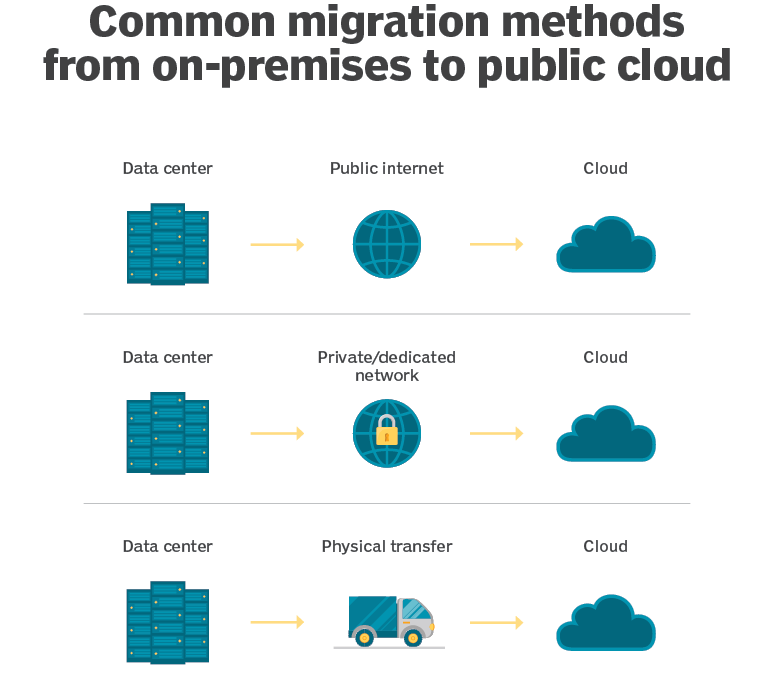During an on-premises-to-cloud migration, there are two primary approaches to moving data and applications: offline or online.
In an offline migration, an enterprise uses physical storage media, such as portable disk drives, to move workloads and data to the cloud. This method typically requires more planning and effort than an online migration, because admins must copy data from local systems onto a portable device, and then physically deliver that device to a cloud provider. Then, the provider will upload the data to the cloud via a local network connection -- which is faster than the public internet -- or connect the storage media directly to its cloud servers.
Usually, this on-premises-to-cloud migration approach costs more than an online transfer, because enterprises need to rent or purchase large volumes of storage media, and then pay to relocate it.
In contrast, an online cloud migration uses a network -- either a cloud provider's direct connection service or the public internet -- to transfer data and applications. Online migrations are simpler overall because IT teams can copy data in one step from their local infrastructure to the cloud. They're typically less expensive than offline approaches, as well, since enterprises only accumulate network bandwidth and data ingress fees.
 Choose the right migration method
Choose the right migration method
To choose an on-premises-to-cloud migration method, calculate how much data you need to move -- and how quickly. While online might be a popular choice, it can be problematic for organizations with large amounts of data and a strict timeframe.
For example, if an organization has only 1 TB of data to migrate and a 1 GBps network connection is available, the online migration should take under three hours. However, 1000 TB would likely take more than 100 days to transfer over the same network connection -- in which case, an offline migration would be a better approach.
Data compression is one of a few techniques that can accelerate online migrations. Data compression reduces the number of bits required to represent data, so more data can move using the same network bandwidth. In addition, enterprises can transfer the most important data first, such mission-critical workloads, to further streamline the online migration. This technique enables users to take advantage of the cloud more quickly, even if the overall migration takes a while.
Another factor to consider when evaluating on-premises-to-cloud migration methods is the reliability of the network connection. If a network connection is intermittent -- or bandwidth availability fluctuates unpredictably -- an online migration could take longer than is acceptable. Security is another consideration; if an online network can't be trusted, or it's not possible to encrypt sensitive data before the migration, an offline migration might be necessary.
Cloud migration tools
Out of these two on-premises-to-cloud migration approaches, the online method remains the most popular, since most organizations don't have massive volumes of data to move. As a result, cloud migration tools cater mostly to online strategies. To smooth the process, most of these tools have assessment and cost estimation features, as well as automation capabilities.
The main advantage of using a third-party cloud migration tool over a provider's native offering is flexibility. Most third-party tools support migrations into multiple clouds, whereas major cloud providers' tools are only compatible with their respective platforms. Additionally, enterprises can use third-party tools in conjunction with cloud vendors' native tools.
An offline migration requires enterprises to acquire physical hardware from their chosen cloud provider. Because of this, users are limited to the provider's native tools.

